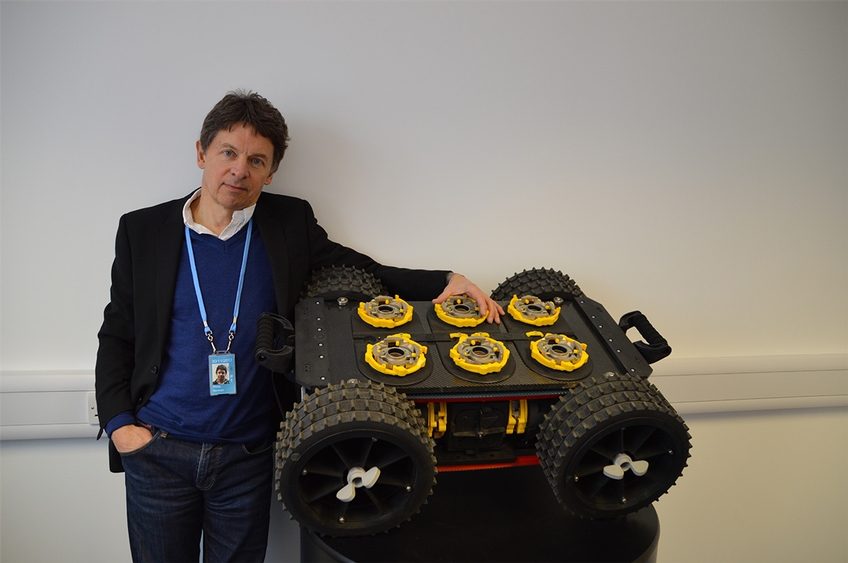
A Ross Robotics ‘unmanned ground vehicle’, with founder and CEO, Philip Norman
Credit: Ross Robotics, STFC
Over the last 50 years, modern robotic technology has established itself deeply within every industry, from manufacturing to healthcare, to transport and security, with robots carrying out many human tasks with unrivalled precision. These robots are generally built with a specific job in mind, with tools and sensors specific to that task, each requiring specialist technical support and potentially high cost maintenance.
Now, pioneering start-up company, Ross Robotics, has developed, and is getting ready to commercialise, a new generation of adaptable, robust and cost effective unmanned ground vehicles (UGVs) that can easily adapt to perform any number of tasks, in hazardous environments, to replace people in areas where it is too dangerous to work.
Ross Robotics multi-purpose UGVs can be trained and repurposed quickly and easily, by non-specialists to perform in hazardous environments - such as in oil and gas facilities, or areas of high radiation and magnetism. Their system, which has already performance tested successfully at both Chernobyl and CERN, is designed to cost effectively help eliminate risk and potentially save lives, while also providing more accurate results.
At the STFC CERN Business Incubation Centre (STFC CERN BIC), Ross Robotics, are taking their technology to the next stage as they get ready to commercialise their product. Since joining just over a year ago, they’ve gained invaluable access to both STFC and CERN intellectual property, technologies and expertise, supported by £40k in grant funding. Also, during this time, engineers at CERN have tested and used the robotics platform for inspections around the Large Hadron Collider, where strong magnetic fields and radiation create hostile environments, and the requirement for robots to manage and maintain its installations is on the increase.
Philip Norman, founder and CEO at Ross Robotics, said “Unlike traditional robots, our UAVs can be easily adapted to perform varying tasks in complex and unpredictable environments. They can be modified as requirements change and grow, and without huge set-up costs they will save industries time and money. For Ross Robotics, joining the STFC CERN BIC has given us vital access to a technologically sophisticated environment within which to operate on a day-to-day basis. The expertise on hand, both in the technology and in the business development spheres, have been invaluable as we move towards the commercialisation phase of our business.”
Delyth Lloyd, business development manager, at STFC, said: “For a small company, turning an innovative idea into a viable commercial reality that can compete successfully with major industrial players is a massive challenge, and I’m thrilled that the STFC CERN BIC is providing the right environment and support for Ross Robotics to do this. This is a fantastic example of how technologies, originally developed for high energy physics research, can be applied to the benefit of both society and the UK economy.”
View the original article here
